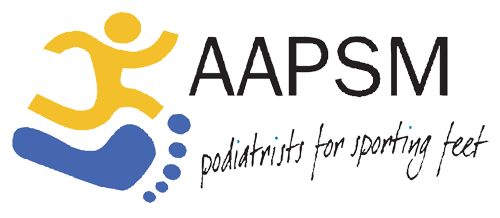Athlete’s Foot
Athlete’s foot is a common fungal infection that affects up to 70% of Australians at some point in their lives. Medically known as tinea pedis, it causes itching, peeling skin, and discomfort, particularly between the toes or on the soles of the feet. If left untreated for a prolonged period of time, it can spread or lead to further complications.
At Gold Coast Foot Centres, our experienced podiatrists offer tailored treatment plans to relieve symptoms and prevent the recurrence of this condition. So, if you’re dealing with persistent itching or cracked, irritated skin, don’t worry. We’ll help you find fast, effective relief.
Book a consultation today and take the first step towards healthy, itch-free, and fungus-free feet!
What Is Athlete’s Foot?
Athlete’s foot is a contagious fungal infection that typically affects the skin between the toes and along the soles. As it thrives in warm, moist environments, a combination of sweaty feet and enclosed footwear makes ideal conditions for this fungus to grow.
The infection can cause symptoms such as intense itching, stinging, redness, flaking, and cracked skin, which can be very annoying. Some of the commonly associated risk factors of this affliction include walking barefoot in public areas like swimming pools or gym showers, wearing tight shoes, and not drying your feet properly.
Signs and Symptoms of Athlete’s Foot
In most cases, athlete’s foot often begins with an itch between the toes, which tends to be followed by a burning or stinging sensation.
However, as the condition progresses, you may notice dry, cracked, or peeling skin, which is often accompanied by redness or a scaly rash. On some people, small fluid-filled blisters may appear, along with an unpleasant odour that is caused by the overgrowth of fungus and bacteria on the feet.
It is important to have an athlete's foot condition treated early because if it is not, it has the potential to worsen. For instance, it can spread to the soles, toenails, or even other areas of the body.
What Causes Athlete’s Foot?
Athlete’s foot is caused by a group of fungi known as dermatophytes that thrive in warm, damp environments. These fungi feed on keratin, which is a protein found in skin and can be prevalent between your toes.
Unfortunately, if you are wearing tight, enclosed shoes with poor ventilation, it can trap moisture and heat, which, in turn, creates the perfect breeding ground for infection. Moreover, sweaty feet, especially if they have not been dried properly, increase the risk of catching this condition.
Is Athlete’s Foot Contagious?
Athlete’s foot is a highly contagious ailment that can spread through direct skin contact with an infected person. It is also commonly picked up via contaminated surfaces such as communal showers, locker rooms, and swimming pool areas.
In these environments, walking barefoot results in a higher risk of exposure and even sharing a towel or footwear can make you more susceptible to infection. That is because the fungus can linger on floors and fabrics for quite a while.
Athlete’s Foot Diagnosis at Gold Coast Foot Centres
If you are displaying symptoms of Athlete’s Foot, you are advised to make an appointment with one of our experienced podiatrists at Gold Coast Foot Centres.
During your consultation, they will undertake a thorough assessment of your feet. This involves performing a visual inspection to look for classic signs of athlete’s foot, such as redness, scaling, or cracking between the toes.
The podiatrist will also ask you about your symptoms and medical history, and in some cases, may take a small skin sample for lab testing to confirm the diagnosis. Doing this helps us rule out other skin conditions that can appear similar, such as eczema or psoriasis. It is nothing to concern yourself about. It just ensures you receive the most accurate diagnosis and customised treatment plan possible.
Athlete’s Foot Treatment Options We Offer
At Gold Coast Foot Centres, we offer a range of treatment options that are designed to tackle the severity and type of your athlete’s foot infection.
We find that most patients respond well to topical antifungal creams or sprays, which help eliminate the fungus and soothe irritated skin. However, for those with more persistent or widespread infections, we may refer you to your GP for oral antifungal medication.
In addition, our team provides expert footwear advice and hygiene tips to keep your feet dry and healthy and manage the most severe chronic or recurring cases with tailored strategies for long-term care.
Preventing Athlete’s Foot
As Athlete’s Foot can be a very annoying and sometimes painful condition, we recommend taking precautions to reduce the risk of suffering from it in the first place.
We believe the best way to prevent the affliction is to embrace a process of simple and consistent foot care. This should involve washing your feet every day using warm water and mild soap. However, it is important that you dry them thoroughly afterwards, especially in between and underneath each of your toes.
If you need to wear socks, you are advised to choose a good-quality pair that is breathable and made from natural fibres. At the same time, it is important to wear shoes that allow for good airflow, as this reduces your likelihood of sweating.
Ideally, you should avoid walking barefoot in wet and moist shared public spaces (such as swimming pools, gym showers, and locker rooms), where fungal spores can thrive. It is also a good idea to apply antifungal powders or sprays to your toes, as they can provide an extra layer of protection. This is especially worth doing if you’re prone to sweaty feet.
As much as you might be attached to them, it is wise to replace old shoes and worn-out socks on a regular basis. These can harbour lingering fungal spores, which can make you more vulnerable to reinfection.
When to See a Podiatrist
Some mild cases of athlete’s foot will respond to over-the-counter treatments. However, if they haven’t made a noticeable difference after a couple of days, and if the symptoms are worsening or keep coming back, then you should make an appointment with a podiatrist.
If you don’t get them treated, cracked skin or fluid-filled blisters can become infected, which could lead to further complications. Indeed, if you suffer from diabetes, poor circulation, or a weakened immune system, it’s especially important to seek professional care, as foot infections can pose serious health risks the longer they are present.
Why Choose Gold Coast Foot Centres?
At Gold Coast Foot Centres, we provide expert diagnosis and bespoke treatment plans to manage recurring or stubborn athlete’s foot. Priding themselves on delivering expert care with a personal touch, our expert and experienced podiatrists will help you treat the immediate condition and take steps to ensure you don’t succumb to it again.
They are highly skilled in diagnosing and treating a wide range of foot and skin conditions, including athlete’s foot, and will take the time to understand your needs. Using modern diagnostic tools, they will provide you with an accurate assessment of your condition. From this, they will then draw up an effective and personalised treatment care plan that works for your lifestyle.
We operate out of several locations on the Gold Coast, from Parkwood to Palm Beach and are committed to providing you with professional foot care in a timely manner.
Book an Appointment Today
Ready to rid yourself of athlete’s foot for good? Please book an appointment with Gold Coast Foot Centres online now or call us on (07) 5539 4484.
We operate with convenient opening hours from Monday to Saturday and will do our best to offer you a same-day appointment.
FAQs
-
It is possible that very mild cases of Athlete’s Foot can go away without treatment, but this is uncommon.
Typically, most infections will require antifungal medication to fully clear the fungus and stop it from spreading. Moreover, if you don’t treat it, the symptoms can worsen or recur.
-
If the symptom of your condition is properly cared for, it will usually improve within a week or two. However, it’s important to continue treatment for the full course, even if symptoms have disappeared early, to prevent them from recurring.
-
Yes, athlete’s foot can return, especially if your foot hygiene practices or footwear choices do not improve. But don’t worry, our podiatrists offer prevention tips to help you stay fungus-free over the long term.
-
No, athlete’s foot affects the skin, while toenail fungus (aka onychomycosis) impacts the nails. However, the same fungus can cause both. So, it’s not uncommon for the two to occur together.





